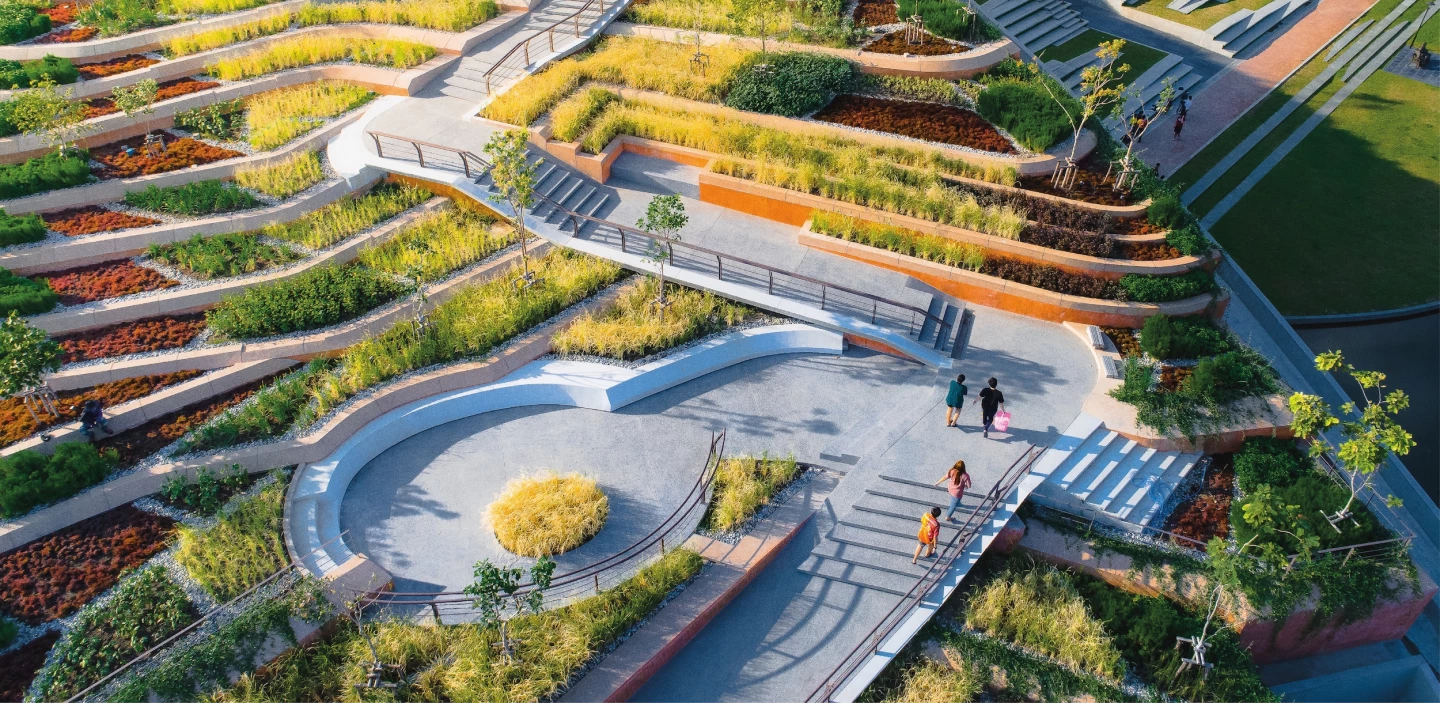The Thammasat University Rooftop Farm (or TURF), by Landprocess, puts an abandoned rooftop area belonging to Thammasat University's Rangsit Campus to fine use as an organic farm. The project incorporates solar power and rainwater collection, and is used to teach sustainable farming techniques.
TURF measures roughly 236,800 sq ft (22,000 sq m) and, according to Landprocess, is the largest organic rooftop farm in Asia. Its overall design is meant to resemble traditional Thai rice fields.
It hosts over 40 edible species, including rice, indigenous vegetables and herbs, and fruit trees, which are chosen to suit the conditions of the site. According to Landprocess, the project produces up to 80,000 meals of organic food each year for the university. The campus canteen then helps make compost from food waste to fertilize crops for the next harvest.
Solar panels power the farm and the university building below. Rainwater is also captured in channels which cause it to meander into several storage areas, to be used for irrigation when required.

"The cascading rooftop can slow down runoff up to 20 times more efficiently than a conventional concrete rooftop," explains Landprocess. "As rainwater zigzags down the slopes, each level of TURF harvests runoff from the previous cell, forming unique clusters of micro-watersheds along the terrace to help absorb, filter and purify rainwater while growing food for the campus. At the end of its journey, four retention ponds await, capable of holding up to 3,095,570 gallons [11,718,007 L] of water once combined."

Several spaces are installed for socializing and visitors can climb to the top to enjoy 360-degree views of the surrounding area. Additionally, a large amphitheater is used as an educational space and TURF hosts year-round workshops on sustainable agriculture techniques.
The project opened in December, 2019, but was only completed recently, and is part of a larger ongoing effort to make Thailand's Thammasat University more sustainable.
Source: Landprocess











